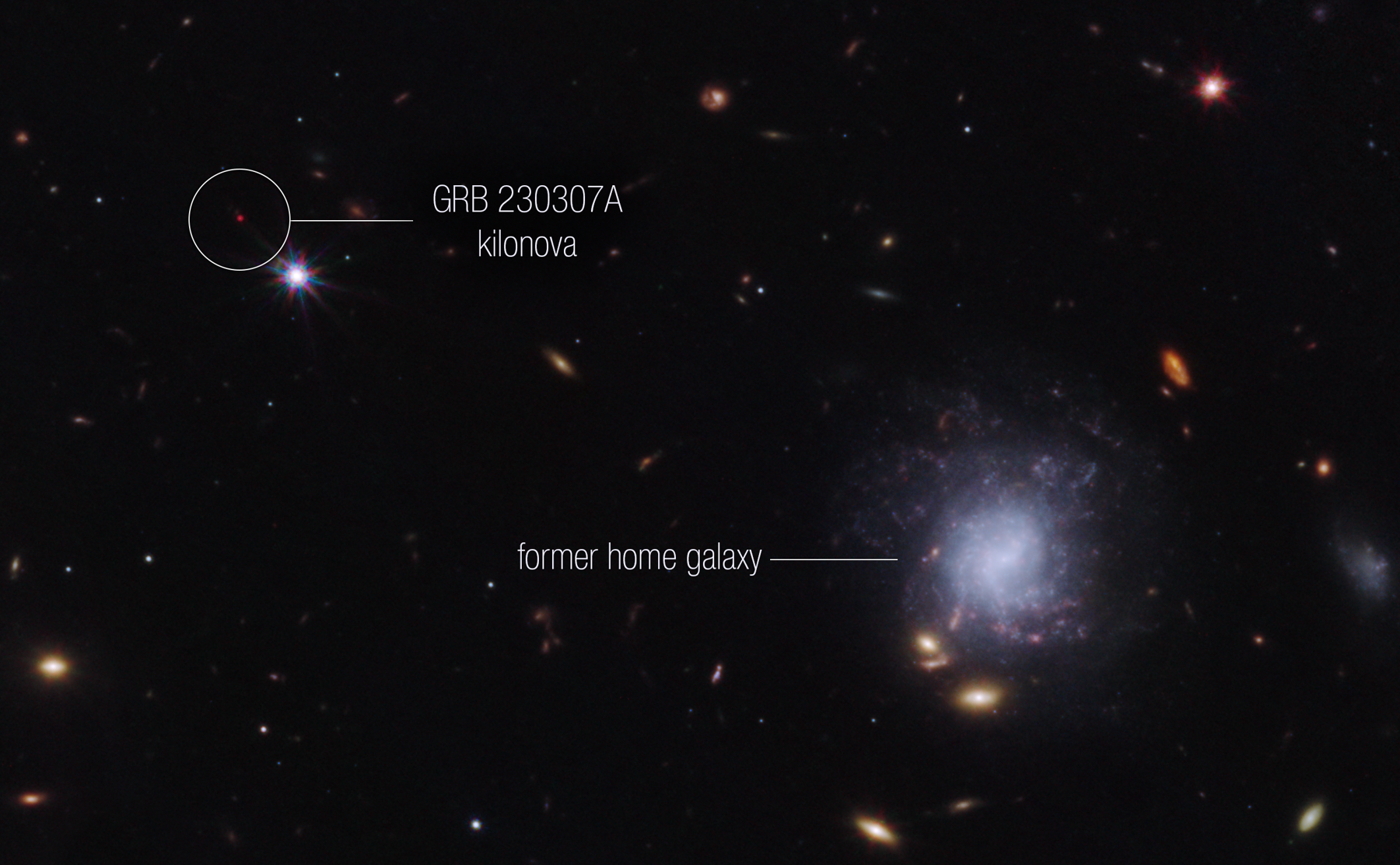The second-brightest known gamma-ray burst has shown the production of rare chemical elements, providing new insight into the synthesis of heavy elements.
 The stars traveled the approximate length of the Milky Way (about 120,000 light-years) outside of their home galaxy, before merging. Image Credit: NASA, ESA, CSA, STScI, Andrew Levan (IMAPP, Warw).
The stars traveled the approximate length of the Milky Way (about 120,000 light-years) outside of their home galaxy, before merging. Image Credit: NASA, ESA, CSA, STScI, Andrew Levan (IMAPP, Warw).
The neutron star merger that produced the extraordinarily intense gamma-ray burst GRB 230307A was studied by scientists. Numerous ground- and space-based observatories, such as NASA’s James Webb Space Telescope, Fermi Gamma-ray Space Telescope, and Neil Gehrels Swift Observatory, were used to observe the explosion.
The international study team, which includes specialists from the University of Birmingham, published their findings in Nature on October 25th, 2023, revealing that they had discovered the heavy chemical element tellurium in the explosion's aftermath.
It is also conceivable that material blasted by the explosion, also known as a kilonova, contains other elements like thorium and iodine, which are necessary for life on Earth.
Gamma-ray bursts come from powerful jets traveling at almost the speed of light – in this case, driven by a collision between two neutron stars. These stars spent several billion years spiraling towards one another before colliding to produce the gamma-ray burst we observed in March this year. The merger site is the approximate length of the Milky Way (about 120,000 light-years) outside of their home galaxy, meaning they must have been launched out together.
Dr. Ben Gompertz, Assistant Professor, Astronomy, University of Birmingham
“Colliding neutron stars provide the conditions needed to synthesize very heavy elements, and the radioactive glow of these new elements powered the kilonova we detected as the blast faded. Kilonovae are extremely rare and very difficult to observe and study, which is why this discovery is so exciting,” Dr. Gompertz added.
GRB 230307A surpassed the combined brightness of the Milky Way Galaxy by almost a million times, making it one of the brightest gamma-ray bursts ever detected. This is the second time that individual heavy elements have been found by spectroscopic measurements following a neutron star merger, offering crucial information about the formation process of these essential components required for life.
Just over 150 years since Dmitri Mendeleev wrote down the periodic table of elements, we are now finally in the position to start filling in those last blanks of understanding where everything was made, thanks to the James Webb Telescope.
Andrew Levan, Study Lead Author and Professor, Astrophysics, Radboud University
GRB 230307A falls within the category of long-duration gamma-ray bursts because of its 200-second duration. This is rare since neutron star mergers are often the cause of short gamma-ray bursts, lasting less than two seconds. Such long-duration gamma-ray bursts are typically the result of a big star exploding.
Researchers are currently trying to find out more about how these massive explosions that produce elements are powered by neutron star mergers.
Just a few short years ago discoveries like this one would not have been possible, but thanks to the James Webb Space Telescope we can observe these mergers in exquisite detail.
Dr. Samantha Oates, Study Co-Author and Lecturer, Lancaster University
Dr. Gompertz concluded, “Until recently, we didn’t think mergers could power gamma-ray bursts for more than two seconds. Our next job is to find more of these long-lived mergers and develop a better understanding of what drives them – and whether even heavier elements are being created. This discovery has opened the door to a transformative understanding of our universe and how it works.”
Journal Reference:
Levan, A., et al. (2023 Heavy element production in a compact object merger observed by JWST. Nature. doi:10.1038/s41586-023-06759-1